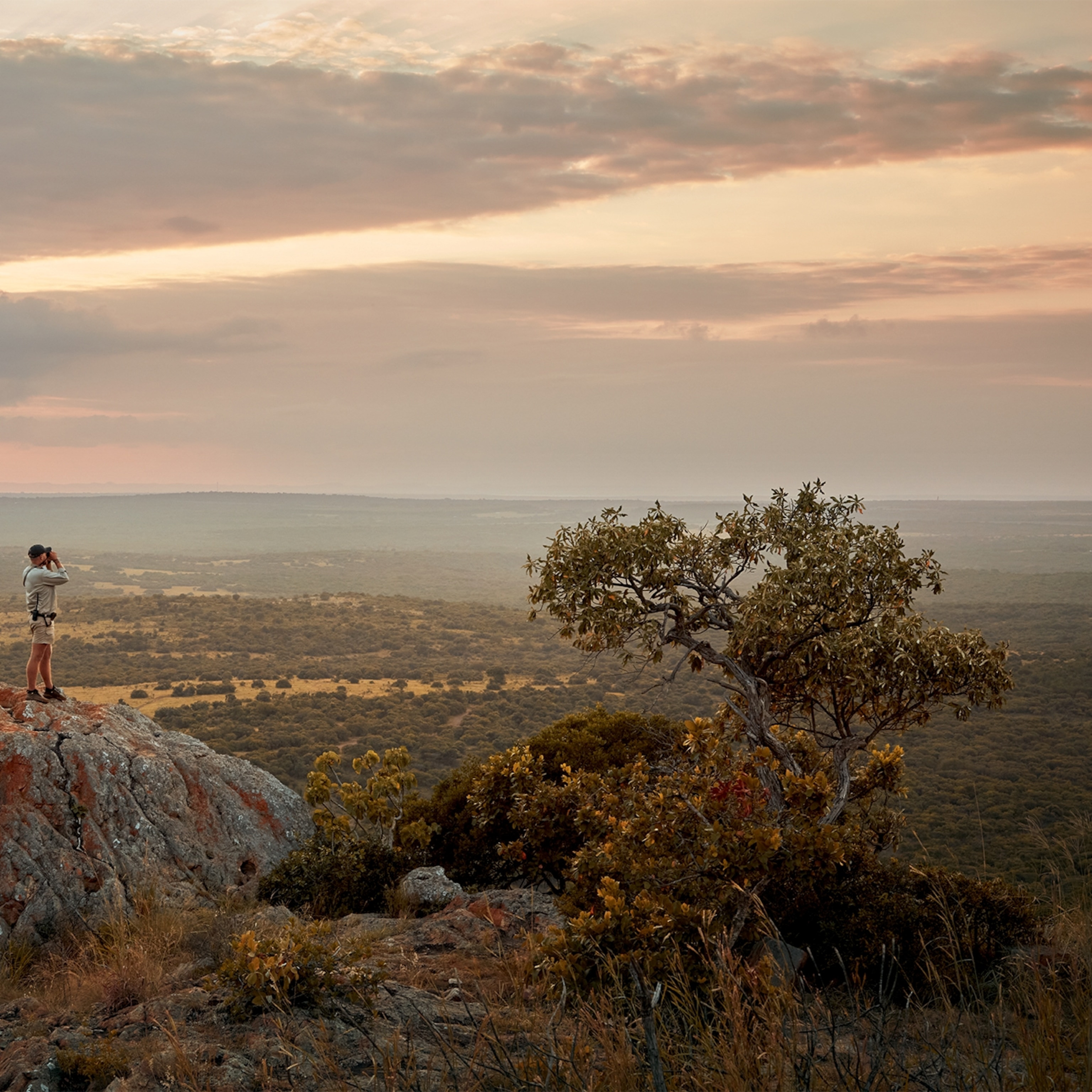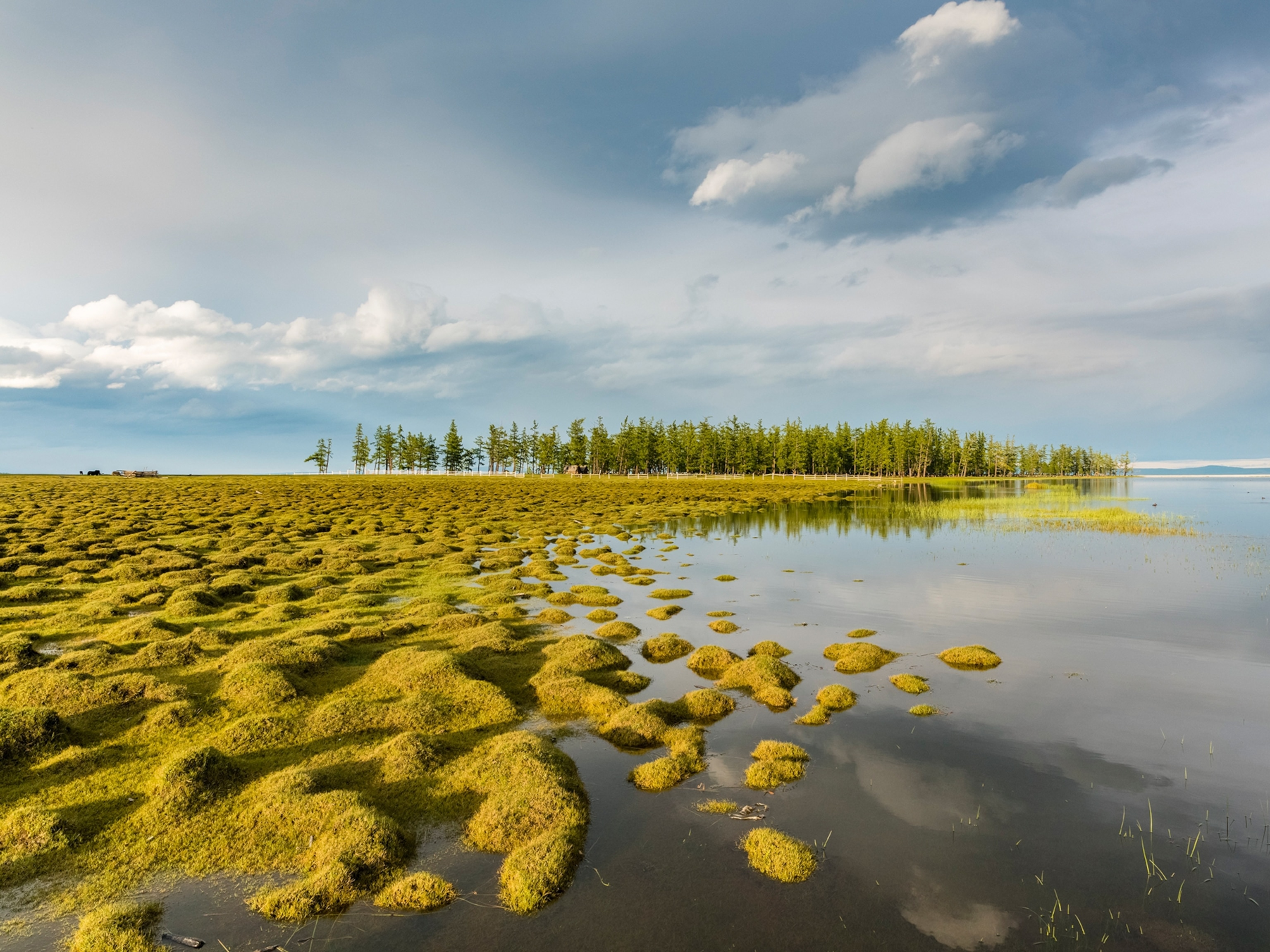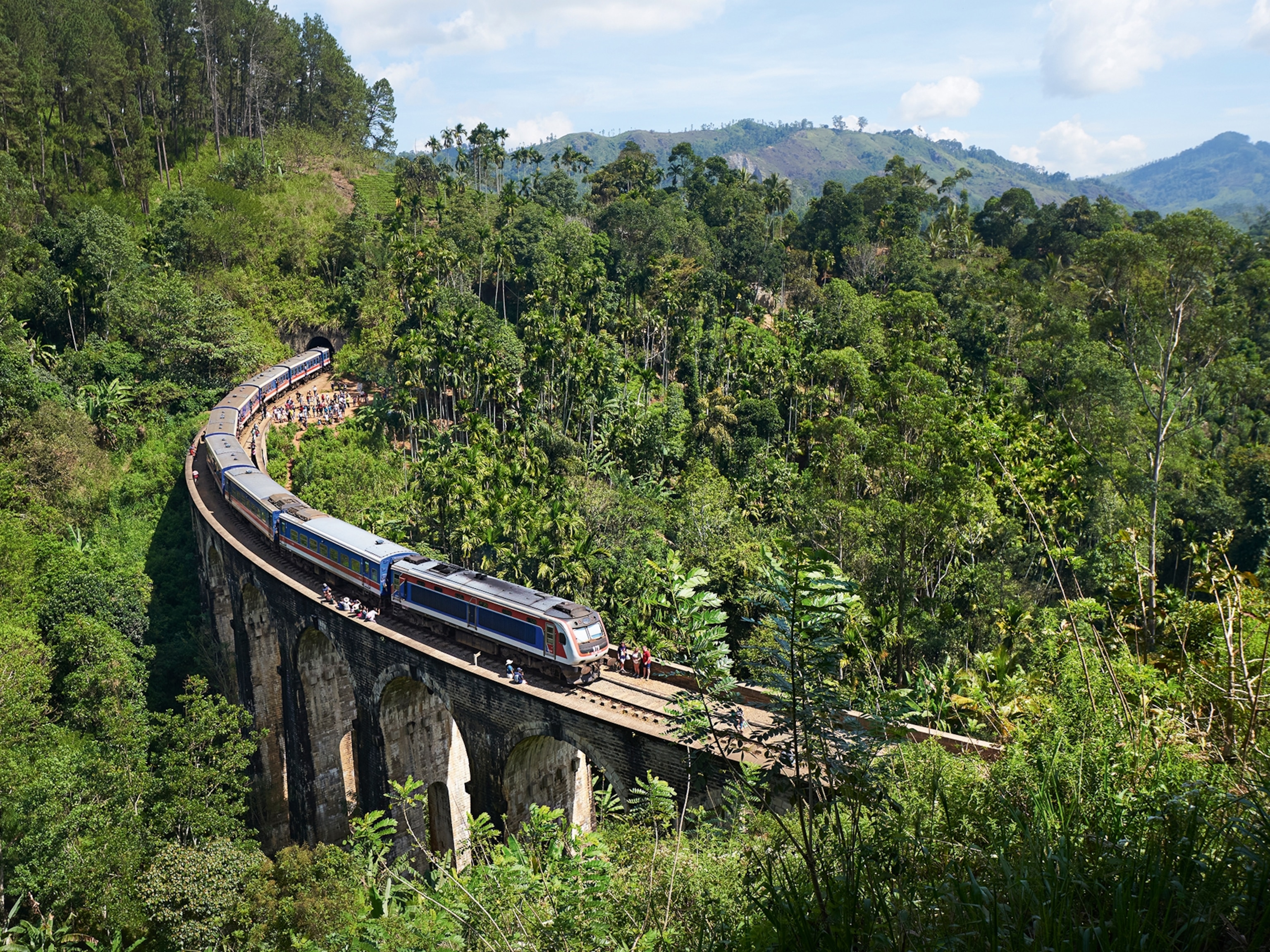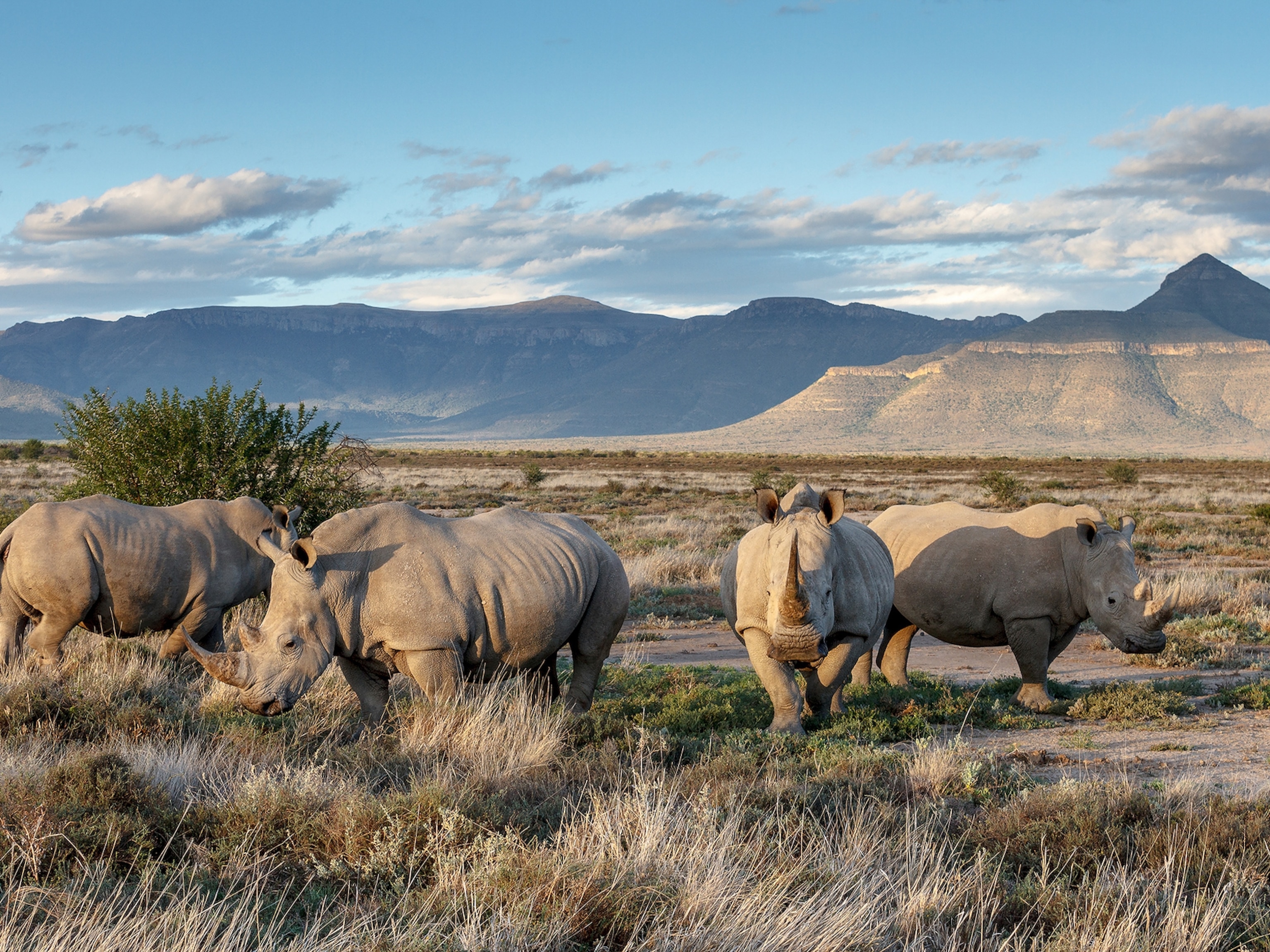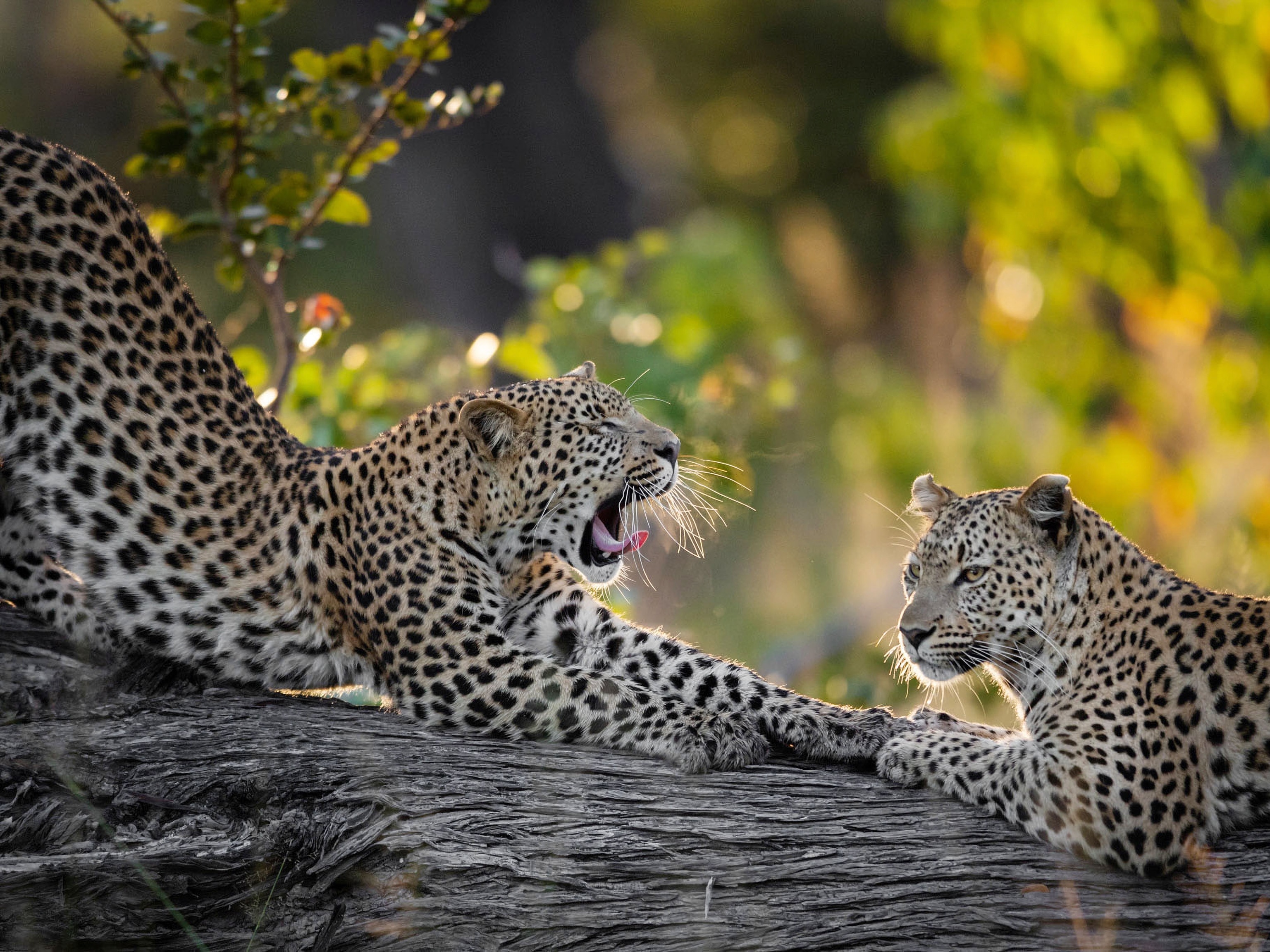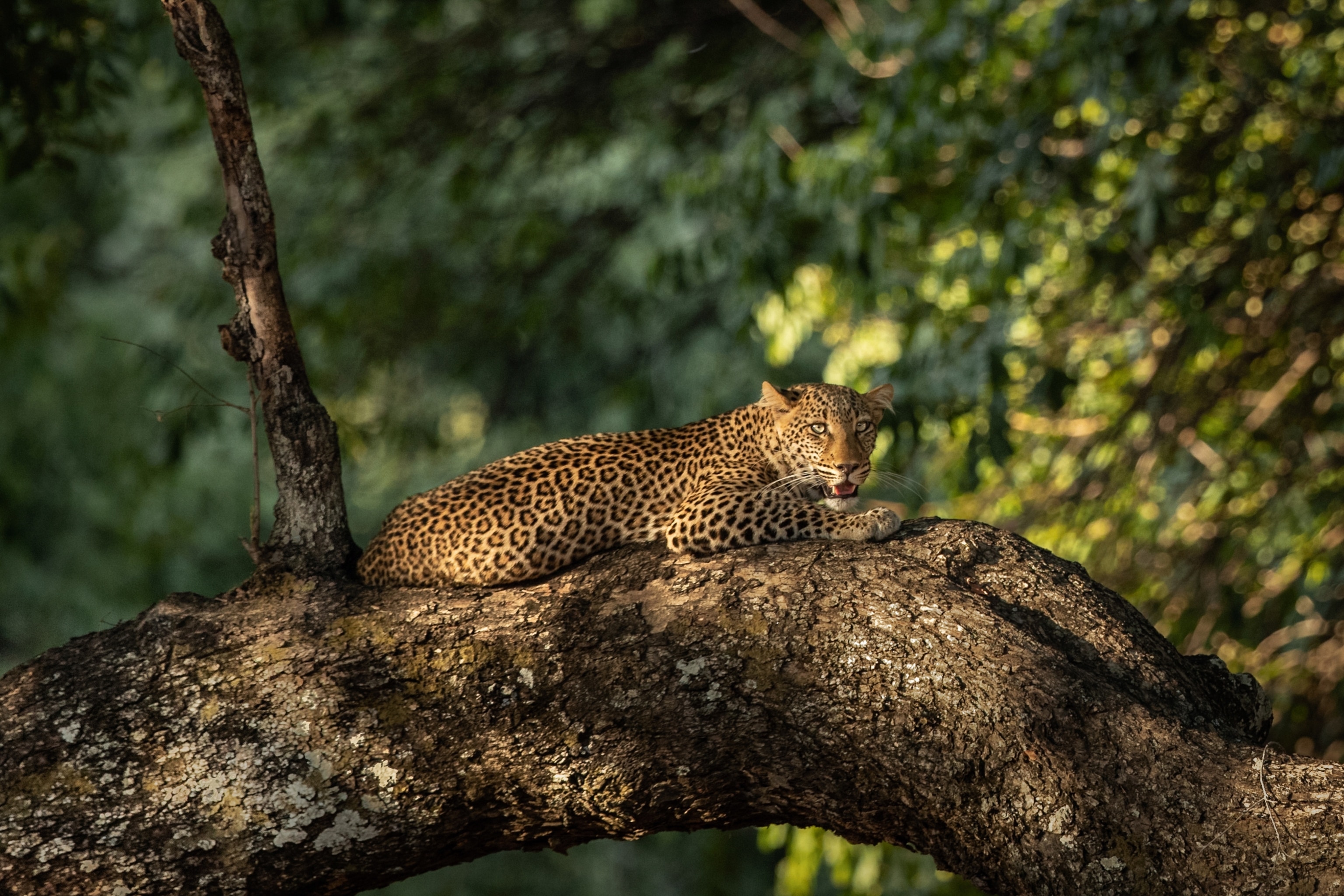
Would you dare to trek through Zambia's 'Valley of the Leopard'?
South Luangwa National Park in Zambia is the original home of the walking safari, with camping sleep-outs and leopard encounters all part of an experience pioneered in the 1950s. Now, a new generation of locals is building on that legacy.
Charles Sakala is mildly obsessed with animal poop. We have been walking for only half an hour and have stopped several times to stare at assorted lumps of waste on the ground.
“See here,” he says, poking a stick at a low mound of shiny brown pellets. “Impala dung. Leopards roll in it to disguise their smell when they are hunting.” A few paces on, he stops to prod another specimen, this one a scattering of neat balls so white and bright they look artificial. “Hyena,” he says solemnly. “You can see from the colour that they eat a lot of bones.”
We are in South Luangwa National Park, a protected swathe of land covering 3,490 square miles of eastern Zambia. The region was established as a game reserve in 1938, with the twisting tangle of the Luangwa River and the mountainous bulk of the Muchinga Escarpment acting as its natural borders. In the 1950s, the park pioneered the concept of the walking safari — an approach to game-viewing that allows visitors to experience the land as its resident wildlife does, on foot.
It’s late May and the park is entering dry season, its vegetation thinning and the greens of the bush slowly edging into beiges and browns. Charles, in a khaki shirt and sand-coloured cargo trousers, perfectly matches the changing of the seasons. He is also the perfect guide, with 13 years’ experience under his belt and a knack for mixing a giddy, wonder-filled awe at the landscapes around him with an encyclopaedic knowledge of every creature great and small within it.
We meet at Time + Tide Mchenja, a tented camp in a grove of ebony trees on the banks of the Luangwa River. The camp, dismantled each year before the rains of the wet season cause the Luangwa to break its banks, and rebuilt again when it recedes, has only just reopened. A thigh-high mark on an albida tree at the entrance to the site reveals how far the waters rose in the past year. With a troop of yellow baboons squabbling in the shade of the trees and warthogs snuffling for roots in the already desiccated earth, it’s hard to imagine that the land has ever been submerged, let alone so recently.
Our aim for the day is to walk through the park to Kakuli, another Time + Tide camp five miles south. Having lain awake for much of the night, listening to a hippo pulling up grass in uncomfortably close proximity to my reed-walled lodge, I had been relieved when the haunting shrieks of a flock of hadeda ibis announced the arrival of dawn. We set off shortly after, with armed rangers up front and bringing up the rear. “Walking is about the small things you miss in a Jeep,” whispers Charles as we pad quietly through the bush. “The sights, the smells, the sounds. It is very special because we touch the earth.”
Our trail leads through thickets of thorny acacia, over open grassland and along paths created by generations of hippos trundling up and down the same route between the river and favoured grazing spot. We edge around deep craters left by the ponderous feet of elephants and wonder if, perhaps, a leopard lurks in the undergrowth watching our clumsy progress through its territory.
We pause each time Charles’s eyes alight with forensic precision on some tiny bit of evidence that an animal recently passed this way — from the small scrapings in the sand that mark the tracks of a white-tailed mongoose to a slender quill that was once attached to a porcupine. With the steady call of unseen ring-necked doves a constant refrain to our slow, focused amble, he points out the nests of weaver birds, a striped feather shed by an African goshawk and a tiny Mozambique nightjar camouflaged in the dirt. He explains the traditional uses of cassia tree pods (“good for stomach cramps”), wild mint (“people use it in a tea to help with Covid symptoms”) and the bark of a leadwood tree (“medicine for bilharzia disease”).
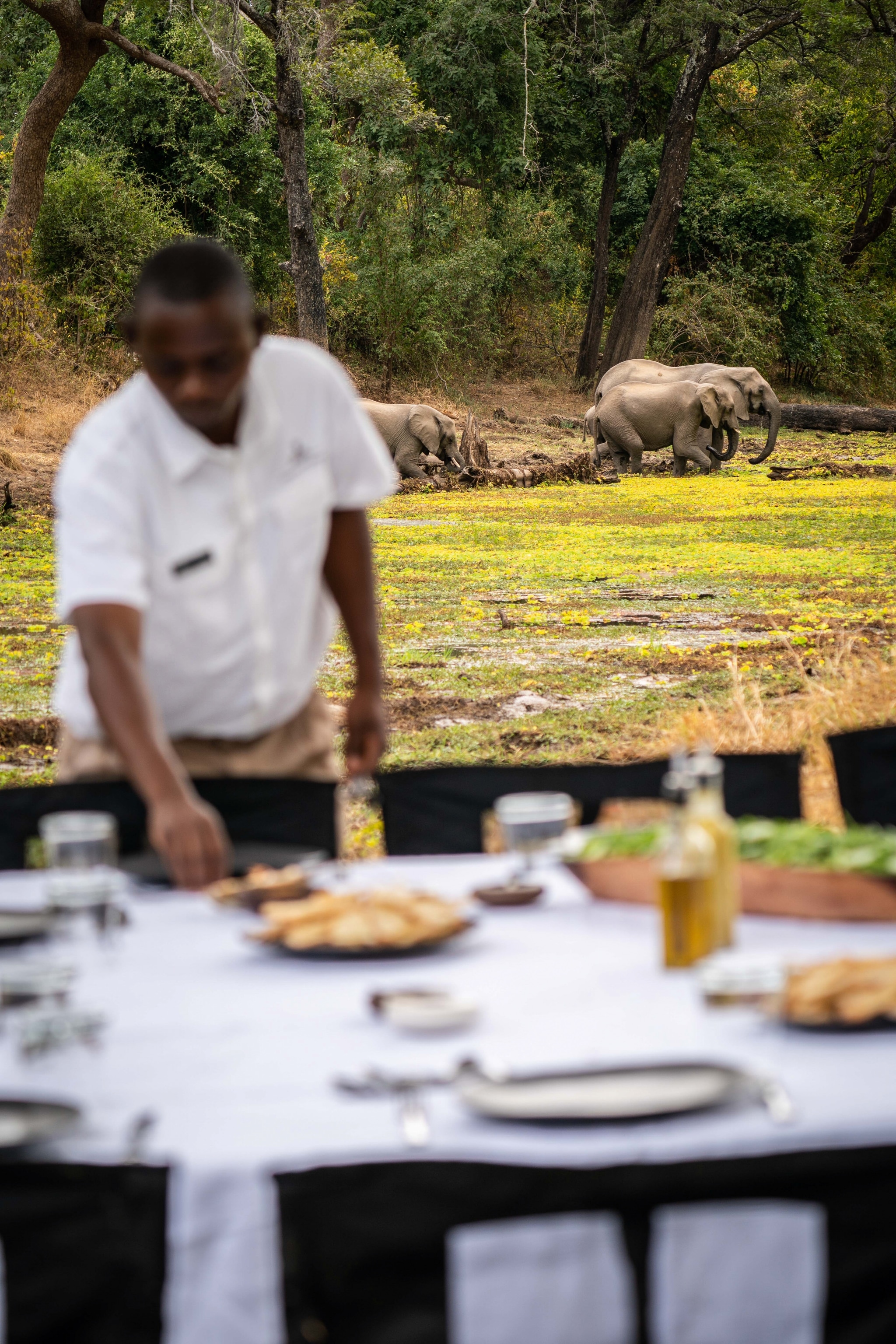
It is 9am and the heat is already bordering on oppressive when we come again to the Luangwa and spy the camp at Kakuli in the distance. For the final 30 minutes, we walk along the river bank, observed by pods of hippos which pop up in the water to inspect the trespassers, honk noisily then disappear in a ring of bubbles. At a final bend, a large monitor lizard falls out of a tree immediately in front of us and lands in the mud with a thump. It looks slightly surprised, then scrabbles away into the river. “When you go out, you don’t know what you will see,” says Charles, laughing. “Mother Nature might say, ‘oh, come around this corner and see what I have for you’. That is the beauty.”
After a few hours at ground level in the bush, I feel pretty relaxed about letting Mother Nature decide the script, and less driven by a need to see the conventional headline stars of safari. “When you love all of nature,” Charles tells me when we arrive at Kakuli, “you are happy to see everything. Safari is not just about seeing lions.”
The 'Valley of the Leopard'
Zambia is credited as the birthplace of the walking safari thanks to the trailblazing British conservationist Norman Carr. At a time when big-game-hunting was still very much in vogue among European and American travellers to Africa, he set about establishing national parks in the region, including South Luangwa, and encouraging visitors to shoot animals only with their cameras. Even more unusually, he placed the needs of the environment and local communities over the whims of rifle-wielding trophy-hunters.
Twenty-seven years after his death, his influence in the park remains strong. Time + Tide took over the safari company he set up and our second camp is a tribute to the nickname locals gave him — kakuli meaning ‘solitary buffalo’. Its open-fronted, thatched lodges look out over the Luangwa and it’d be easy to drift off here, enjoying the views of mud-caked crocodiles slumped on the shore and the pleasant breeze sweeping up from the river.
But there is too much happening in the park to allow for a post-walk doze. It may be best known for the quieter, more immersive pleasures of an on-foot safari, but South Luangwa does still have the headline stars that pull many visitors to southern Africa, and they are best seen from the back of a Land Rover. I have already heard some of them — the deep, guttural roar of lions having occasionally broken through the noise of the dining hippo the previous night at Mchenja.
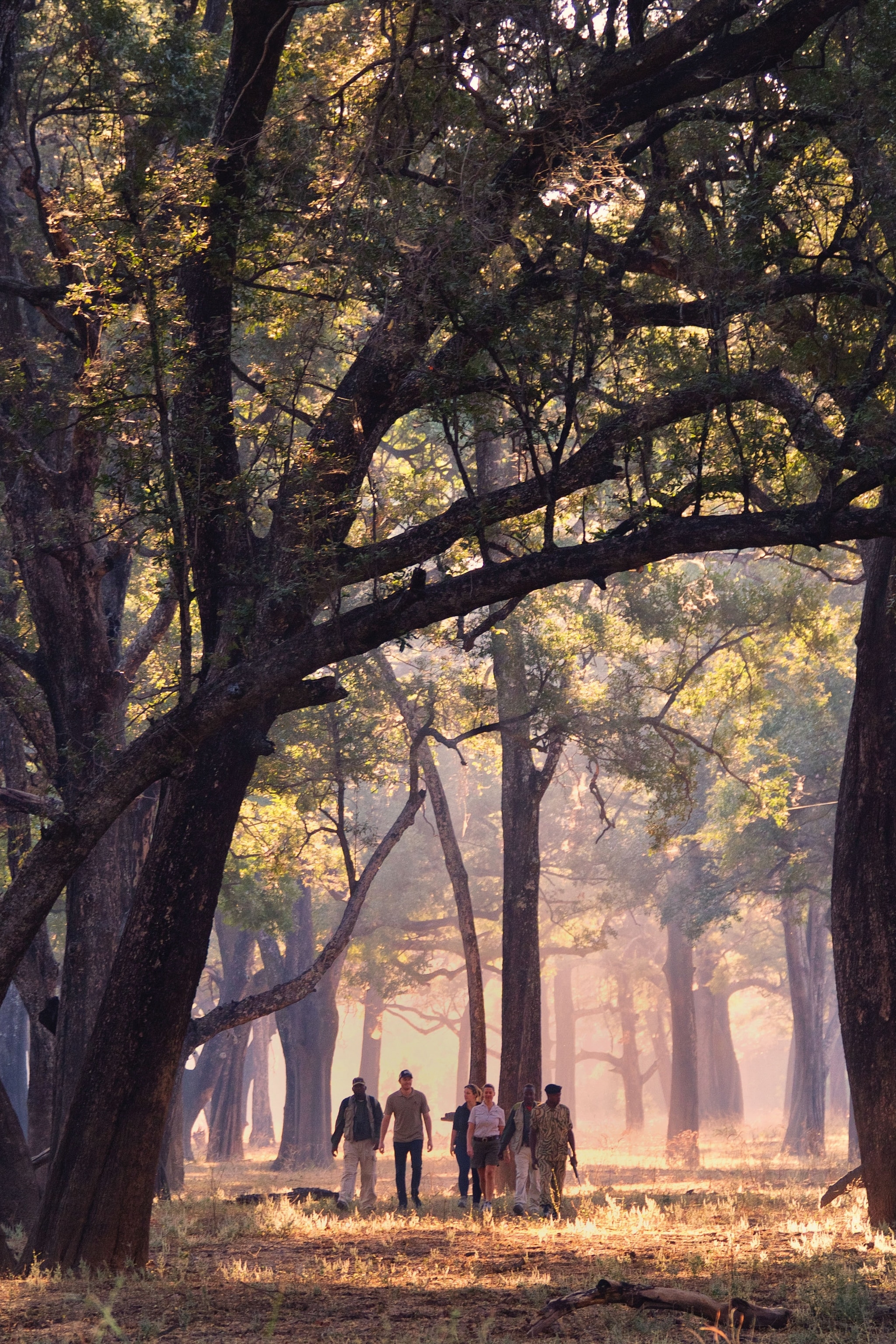
It doesn’t require much patience to encounter large wildlife here. We bump along dirt tracks as the setting sun casts long shadows and turns the bush golden. Herds of impala, puku and zebra create natural roadblocks and watch entirely unmoved as we approach, before slowly plodding off, some of the more skittish antelope making improbably large and graceful leaps over the undergrowth to get away. We come across several of the park’s endemic Thornicroft’s giraffe, whose markings stop at the knees and give the impression that they’re wearing long, brown socks. A baby elephant blocks our path and furiously waggles his ears and trunk in an attempt to appear threatening, before abruptly spinning around and fleeing into the bush with a strangled trumpet blast.
As stars start to speckle the darkening sky, we stop at a lake to watch an enormous hippo lumbering out of the water, a plump calf keeping close behind. The gentle chirruping of frogs is interrupted by a sudden commotion — a troop of baboons, in a frenzy of barking. “I’m sure there’s a leopard nearby,” says Charles, and we set off again, propelled by a rising sense of anticipation.
Before it gained fame as the birthplace of the walking safari, South Luangwa was known as ‘the valley of the leopard’. There are no reliable statistics as to how many live in the park, but it’s regarded as one of the best places in Africa to see them. “There are so many leopards because there is so much food,” explains Charles, as we shine torches into the undergrowth. “There are millions of impala and millions of bushbucks. And they love this environment, with so many trees.”
Rounding a corner, we come across our quarry lying in a clearing by the side of the track — two leopard cubs, less than two years old. “Their mother is probably hunting,” whispers Charles. “But she has no chance now the baboons know she is here.” The cubs show no interest in our presence, and eventually slink off into the bushes.
It’s the first of several leopard sightings during our time in the reserve. For the final couple of days, we move further south to a more forested area pockmarked with lagoons, their surfaces carpeted in bright green Nile cabbage. Here, we regularly come across the same female leopard — we see her by a waterhole in broad daylight, a tiny cub bounding behind her on unsteady legs; on the branch of a mopane tree at sunset, limbs dangling either side; and, in the dead of night, trailed by a hulking great hyena intent on poaching her kill.
Under star-filled skies
Chinzombo, a lodge in that southern portion of the park, is even more closely connected to Norman Carr. Located near the site of one of his old camps, which disappeared when the river eroded its plot, it’s accessed by a boat ride across a broad, brown sweep of the Luangwa. Black-and-white photos of Carr decorate the wooden shelves of the open-air lounge and dining area, alongside well-thumbed books on African insects, necklaces made from pumpkin seeds, and an old crocodile skull. The strangest of family portraits are the shots with Big Boy and Little Boy, two orphaned lions he rescued as cubs and released back into the wild as adults. There’s Carr, pipe wedged into a corner of his mouth, a cub tucked neatly under each arm; in another, there he is nonchalantly shaving his face with a razor as two fully grown lions play not half a metre away; another shows his son strolling along with one of the ‘boys’ as casually as one might walk a dog.
A walk with a lion is obviously not an experience offered at the camp these days, but Chinzombo does give visitors the chance to get as close to the bush as Carr regularly did — by sleeping in it. After a bumpy drive along a track fringed by tall grass, Charles and I arrive at a dried-out stretch of the Luwi River just as the sun starts to dip below the horizon. Set up on the white sands are my sleeping quarters for the night: a roll-up mattress and a mosquito net. Fires are lit around the camp, to ward off curious wildlife, and we settle around one of them, chatting amiably and listening to the various chirps and croaks of the surrounding bush. As my eyes adjust to the light of the rising moon and a faint outline of the Milky Way emerges, I spot two shapes moving a little beyond our beds. I point them out to Charles, who stares intently for a while and then exclaims, “Oh yes, those are hyenas!” The shapes disappear. “They will come back.”
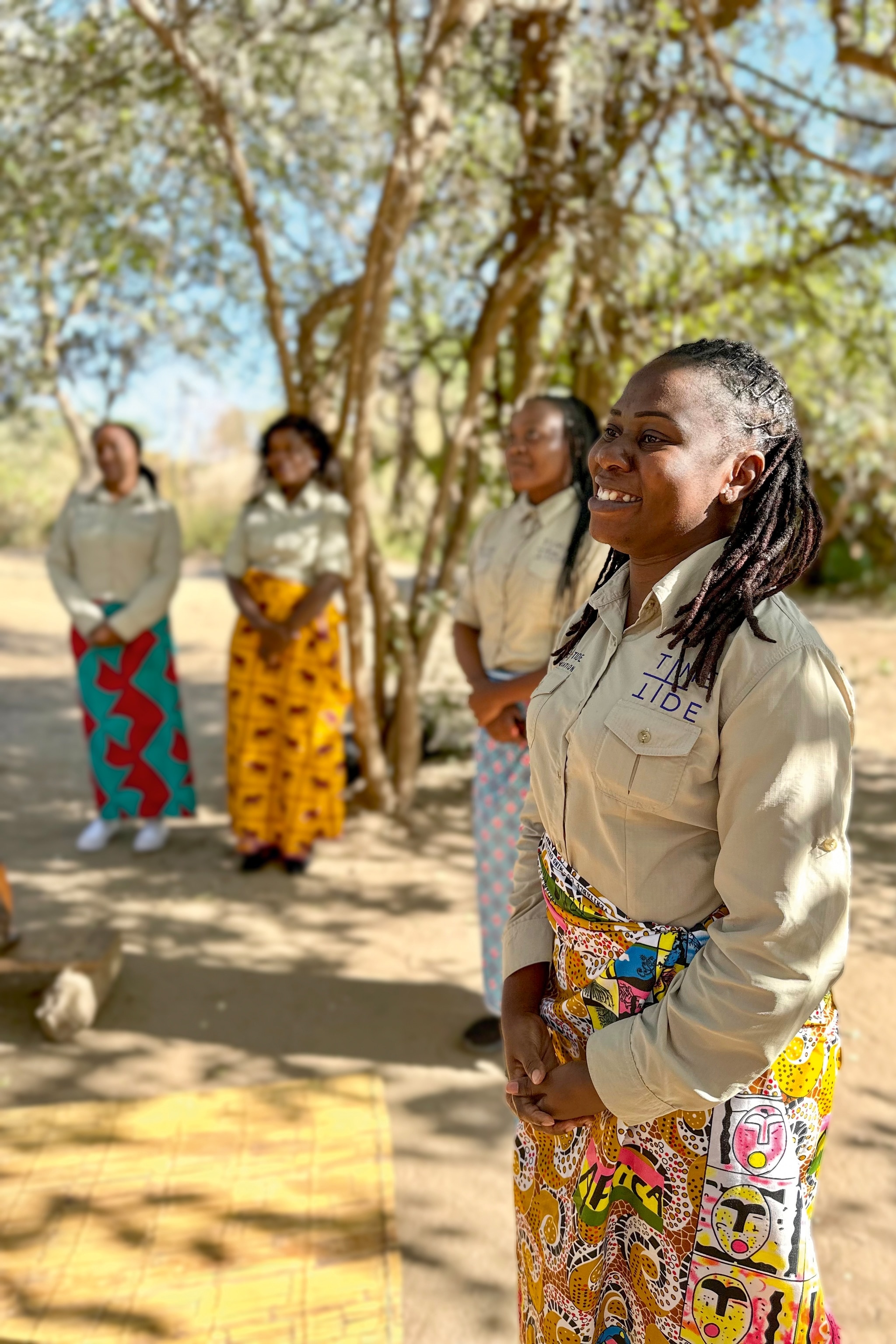
Lying on my mattress that night, as armed wardens keep watch over the site, I am too distracted by the scene-stealing performance of the sky to keep a look-out for hyenas. Shooting stars regularly whizz across it, one particularly fat one falling to Earth like a downed rocket. Fully risen, the moon is so bright it’s like someone switched on a light. It seems to make the local wildlife rowdy — through the darkness come the saw-like calls of leopards, the deep bellowing rumbles of lions, the high-pitched chattering of hyenas and the harsh barks of baboons. When the moon sets around 2am, the world falls silent. A universe of stars is revealed, the streaked band of the Milky Way now shining vivid and intense among them.
Changing attitudes
Over a breakfast of strong coffee and fried eggs cooked on the fire, Charles tells me he stayed up all night, too transfixed by his surroundings to go to bed. He shows no sign of fatigue, his humour and ability to tell a cracking good story still intact, but perhaps it’s just as well that I’m leaving the reserve to learn about a final part of Norman Carr’s legacy.
On the edge of South Luangwa, separated from the park by the river, lies the town of Mfuwe. Kids in crisply ironed school uniforms cycle along the wide, dusty road running through it and women in patterned chitenge sarongs browse the market, moving between stalls selling sweet potatoes, corn, radios and Tupperware. I meet Thokozile Phiri Mwamba, wearing a bright chitenge over black jeans and Adidas trainers, in the shade of a mango tree just off the main street. Communications manager of the Time + Tide Foundation, Thokozile is part of a female-heavy team that builds on a scheme hatched by Carr to use funds generated by the park to provide educational opportunities for villagers living around it.
The foundation provides practical support in the form of student sponsorships and adult literacy programmes and, more radically, works to change negative attitudes about traditionally marginalised groups. At local Yosefe Primary School, children with special needs are integrated into regular education, to help develop their social skills and to stop other kids seeing them as ‘other’. “We want to promote more inclusivity and less stigma,” Thokozile says as she shows me around, gaggles of students running out of classrooms to come and say hello, their headmaster gamely attempting to usher them back inside. “I already see a lot of positive change.”
Female empowerment projects are run at the school, too, encouraging parents to keep their daughters in education longer and running courses in business management and public speaking. In a development that seems as groundbreaking now as Carr’s ideas were in his day, the foundation also champions positive masculinity, placing some of the responsibility for that empowerment on to men’s shoulders. “When women get stronger, some men are threatened,” Thokozile tells me. “We teach them that it’s not a bad thing if a women does well.”
Charles had earlier told me that of the 15 Time + Tide guides working in South Luangwa, all were local but none were female. “We are pushing hard to change that,” he’d said. With his enthusiasm and Thokozile’s passion, it might come sooner rather than later — perhaps the guides leading walking safaris in South Luangwa in the future are the girls sitting in the classrooms of Yosefe today.
To subscribe to National Geographic Traveller (UK) magazine click here. (Available in select countries only).

